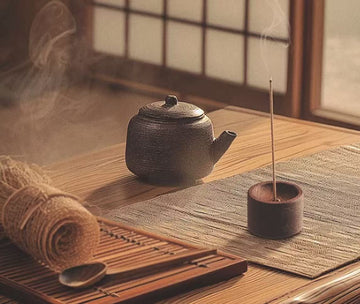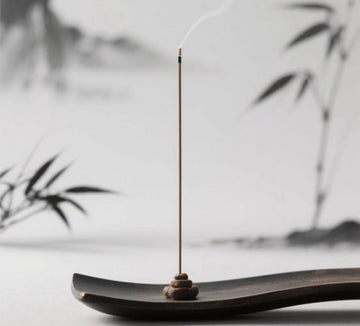In recent years, a curious and somewhat alarming claim has circulated on the internet: that burning incense indoors may be more harmful than inhaling secondhand cigarette smoke. This idea has understandably stirred anxiety, especially among those who enjoy lighting a stick of incense during moments of relaxation, meditation, or spiritual practice. But is there any truth to this comparison?
This article takes a deep dive into the science and facts surrounding incense smoke and cigarette smoke. By exploring the composition, health risks, and mitigating factors of each, we aim to answer the question once and for all: Is incense worse than cigarette smoke?
The Popularity of Incense in Modern Homes
Incense has been used for thousands of years across cultures. From ancient temples to modern living rooms, it serves multiple purposes: cleansing the space, promoting relaxation, aiding meditation, and even improving focus. In today's fast-paced society, more and more people are turning to incense as a way to create a peaceful and aromatic indoor environment.
But while incense is celebrated for its calming effects, concerns about its safety are valid—especially when misleading claims suggest it may be as bad or worse than cigarette smoke.
Understanding Secondhand Smoke: A Global Health Hazard
To evaluate any comparison, we must first understand what secondhand smoke actually is.
Secondhand smoke, also known as environmental tobacco smoke (ETS), is the smoke emitted from the burning end of a cigarette, cigar, or pipe, along with the smoke exhaled by the smoker. According to the World Health Organization (WHO), this smoke contains over 4,000 chemicals, of which at least 69 are known carcinogens. These include:
-
Nicotine – a highly addictive chemical
-
Tar – a sticky substance that coats the lungs
-
Benzene, formaldehyde, arsenic, and cadmium – toxic and carcinogenic substances
-
Carbon monoxide – a gas that reduces the blood's oxygen-carrying capacity
-
PM2.5 (particulate matter smaller than 2.5 microns) – deeply penetrates lung tissue
The dangers of secondhand smoke are well-documented. It is a known cause of:
-
Lung cancer
-
Heart disease
-
Stroke
-
Asthma and respiratory infections, especially in children
-
Low birth weight and sudden infant death syndrome (SIDS)
Simply put, exposure to secondhand smoke is universally recognized as a serious health risk with long-term consequences.
What Does Incense Smoke Contain?
When incense burns, it releases fragrant smoke that contains a mix of particulate matter, volatile organic compounds (VOCs), and other byproducts of combustion. The concern arises mainly from:
-
PM2.5 particles (like in cigarette smoke)
-
Carbon monoxide in trace amounts
-
Polycyclic aromatic hydrocarbons (PAHs) – in very small amounts
However, the composition of incense smoke depends entirely on the ingredients used. This leads us to a crucial distinction: natural incense versus chemical incense.
Natural Incense vs. Chemical Incense
The incense available on the market generally falls into two categories:
1. Natural Incense
Natural incense is made using ingredients such as:
-
Ground sandalwood, agarwood (oud), or other aromatic woods
-
Resins like frankincense or myrrh
-
Herbs, spices, and natural essential oils
-
Plant-based binding agents like makko powder (from the tabu-no-ki tree)
Natural incense produces a soft, mild fragrance and relatively low smoke levels. It is free from synthetic additives, and when burned in a well-ventilated area, it is unlikely to pose serious health risks.
2. Chemical or Synthetic Incense
Chemical incense, on the other hand, may contain:
-
White glue (polyvinyl acetate)
-
Nitrate-based oxidizers (e.g., sodium nitrate)
-
Synthetic fragrances
-
Artificial colorants
-
Talcum powder or fillers for bulk and appearance
When burned, chemical incense can release:
-
Nitrogen oxides (from burning nitrates)
-
Formaldehyde, benzene, and toluene (from synthetic scents)
-
Heavy metals like arsenic and lead (from dyes and cheap binders)
These substances can be harmful, especially in closed, unventilated environments, and do resemble the kind of toxins found in cigarette smoke.
Is Incense Worse Than Cigarette Smoke?
Now to the heart of the matter. Is incense smoke objectively worse than cigarette smoke?
The answer is a qualified no—but with important nuances.
✅ Why Incense is Safer Than Cigarettes:
-
Absence of Nicotine and Addictive Substances
-
Natural incense contains no nicotine, which is the primary addictive and vasoconstrictive compound in tobacco.
-
It does not affect brain chemistry or cardiovascular systems in the same way.
-
-
Frequency and Duration of Exposure
-
Most people light incense occasionally, not continuously throughout the day like many smokers.
-
Incense is rarely inhaled directly and is usually used in open spaces or living rooms, not in confined airways.
-
-
Nature of Ingredients
-
Pure natural incense is composed of botanical materials, not processed chemicals.
-
When burned properly in ventilated areas, its smoke is lighter, more diffused, and carries fewer harmful compounds.
-
-
Lower Concentration of Known Carcinogens
-
Scientific studies (e.g., those published in Environmental Health Perspectives) suggest that incense may release some PAHs and VOCs, but at levels far lower than cigarette smoke.
-
The combustion of a single incense stick releases a fraction of the toxins found in a cigarette, especially when chemical additives are avoided.
-
Important Considerations: Ventilation and Moderation
While natural incense is clearly less harmful than cigarette smoke, it’s still important to practice responsible usage:
-
Ensure proper ventilation – Open windows or use air purifiers when burning incense.
-
Choose all-natural incense – Read labels carefully or buy from trusted brands that disclose full ingredient lists.
-
Avoid burning multiple sticks at once – This can increase PM2.5 levels unnecessarily.
-
Keep out of reach of children, pets, and those with asthma or respiratory issues
Remember, PM2.5 is present in incense smoke, and prolonged exposure—even to natural sources—should be minimized in enclosed spaces.
How to Identify Safe Incense
For consumers wondering how to distinguish between safe, natural incense and synthetic chemical-laden varieties, here are some practical tips:
-
Look at the ash – Natural incense ash is soft, light, and not hot. Chemical incense may have dense or overly hot ash due to added accelerants.
-
Burn time – A quality natural stick (around 21 cm) should burn slowly over 45–60 minutes. Fast-burning sticks are often laced with oxidizers.
-
Scent quality – Chemical incense tends to smell overly strong, perfumed, or even harsh. Natural incense has a mild, warm, and lingering scent.
-
Lingering fragrance – Good natural incense can leave a subtle, pleasing aroma for 10–24 hours on fabrics or in the air.
-
Packaging and labeling – Reputable brands often highlight “all-natural,” “chemical-free,” or disclose origin of materials (e.g., Vietnamese agarwood, Indian sandalwood).

Cigarettes vs. Incense: Final Verdict
| Criteria | Cigarette Smoke | Natural Incense Smoke |
|---|---|---|
| Addictive compounds | Yes (Nicotine) | No |
| Carcinogenic substances | 69+ known carcinogens | Very few, mostly avoidable with natural incense |
| Typical usage pattern | Several times per day | Occasional |
| Ventilation required | Yes | Yes, but effects are less severe |
| Associated diseases | Heart disease, lung cancer, stroke | Minor respiratory irritation (if any) |
| Harm to others | High (via secondhand smoke) | Low (especially with natural incense in ventilated rooms) |
In short, natural incense, used responsibly, is not worse than cigarette smoke. In fact, it is substantially less harmful. However, synthetic incense loaded with chemicals may approach the risk level of secondhand smoke—and should be avoided entirely.
Conclusion
The comparison between incense and cigarettes only makes sense when chemical incense is involved. For centuries, people have used natural incense not just for fragrance, but for ritual, relaxation, and health-related practices. Dismissing all incense as dangerous is a disservice to both history and science.
That said, even the healthiest substances—incense included—should be used in moderation and with awareness of proper ventilation. Like the old saying goes, "Even medicine in excess becomes poison."
So if you're someone who enjoys a moment of calm with a gentle wisp of sandalwood or agarwood in the air, rest assured: when used responsibly, natural incense is a safe and even beneficial part of your home environment.









